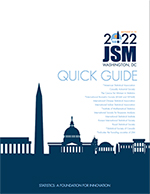Back
2022 Joint Statistical Meetings
Survey Research Methods Section
Session: Small-Area Estimation and Survey Methods Sampler
Embracing Cross-Loading to Improve Latent Variable Models Fit: A Comparison of Exploratory and Bayesian Structural Equation Modeling
Tuesday, August 9, 2022
Activity Number: 286
-
Kevin Gittner
Kennesaw State University - Kennesaw, GA
Traditional methods of latent variable modeling fix all non primary factor cross-loading values to zero, but the methods have evolved to allow non-zero cross-loading values. These new methods allow for improved modeling of latent constructs by enabling researchers to achieve better model fit while preserving the realistic relationship between items and factors. Exploratory structural equation modeling (ESEM) and Bayesian structural equation modeling (BSEM) both allow relaxing the restrictive assumption that force all minor cross-loading values to be constrained to zero. While some studies have compared BSEM and ESEM models to maximum likelihood confirmatory factor analysis models (Gucciardi & Zyphur, 2016; Guo et al., 2019; Wei et al., 2022), these comparisons have not been extended to include estimation across the different available software that have incorporated both methodologies. Considering the flexibility in specification of ESEM and BSEM in the presence of cross-loading, with the limited computational algorithms developed for estimating parameters of these models, a comparison of these models across different software packages is vital to understand the full potential that ESEM and BSEM methods provide to improve model fit. Using real data on mental ability test scores (Holzinger & Swineford, 1939), this study compares ESEM and BSEM estimation in Mplus and R. The results provide an appropriate application of these methods and an evaluation of the consistency of parameter estimates across software packages.

